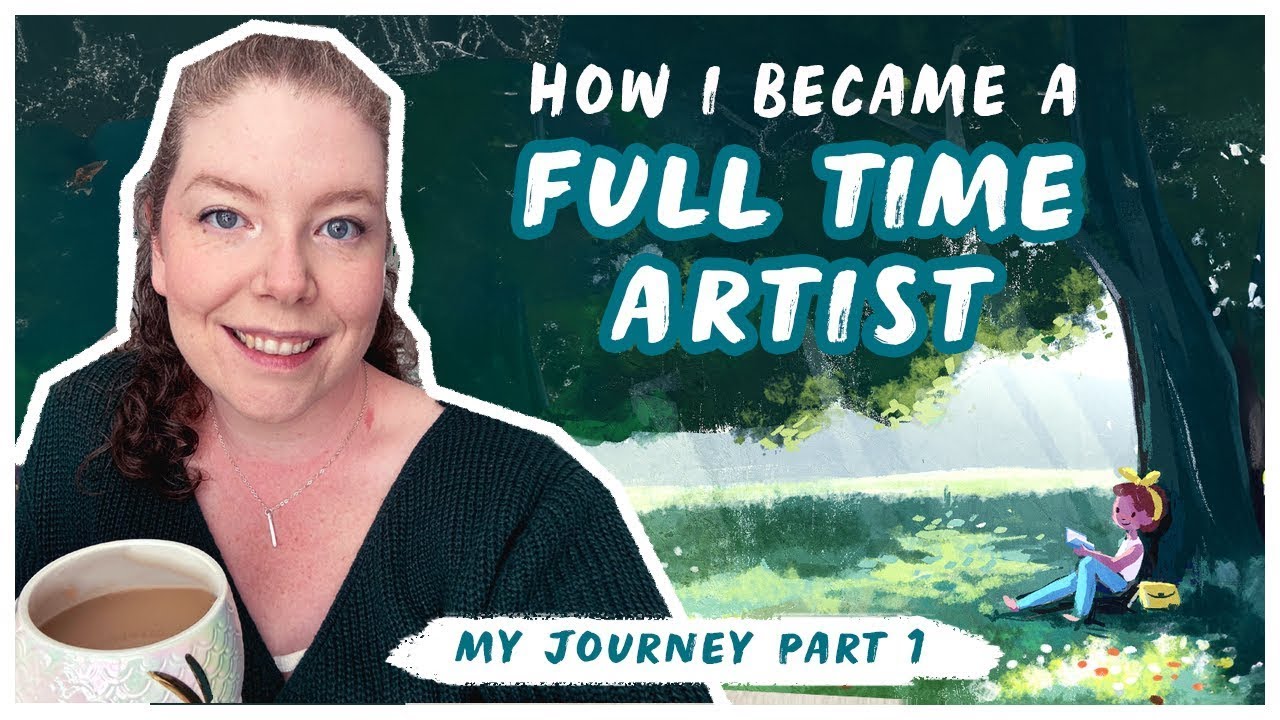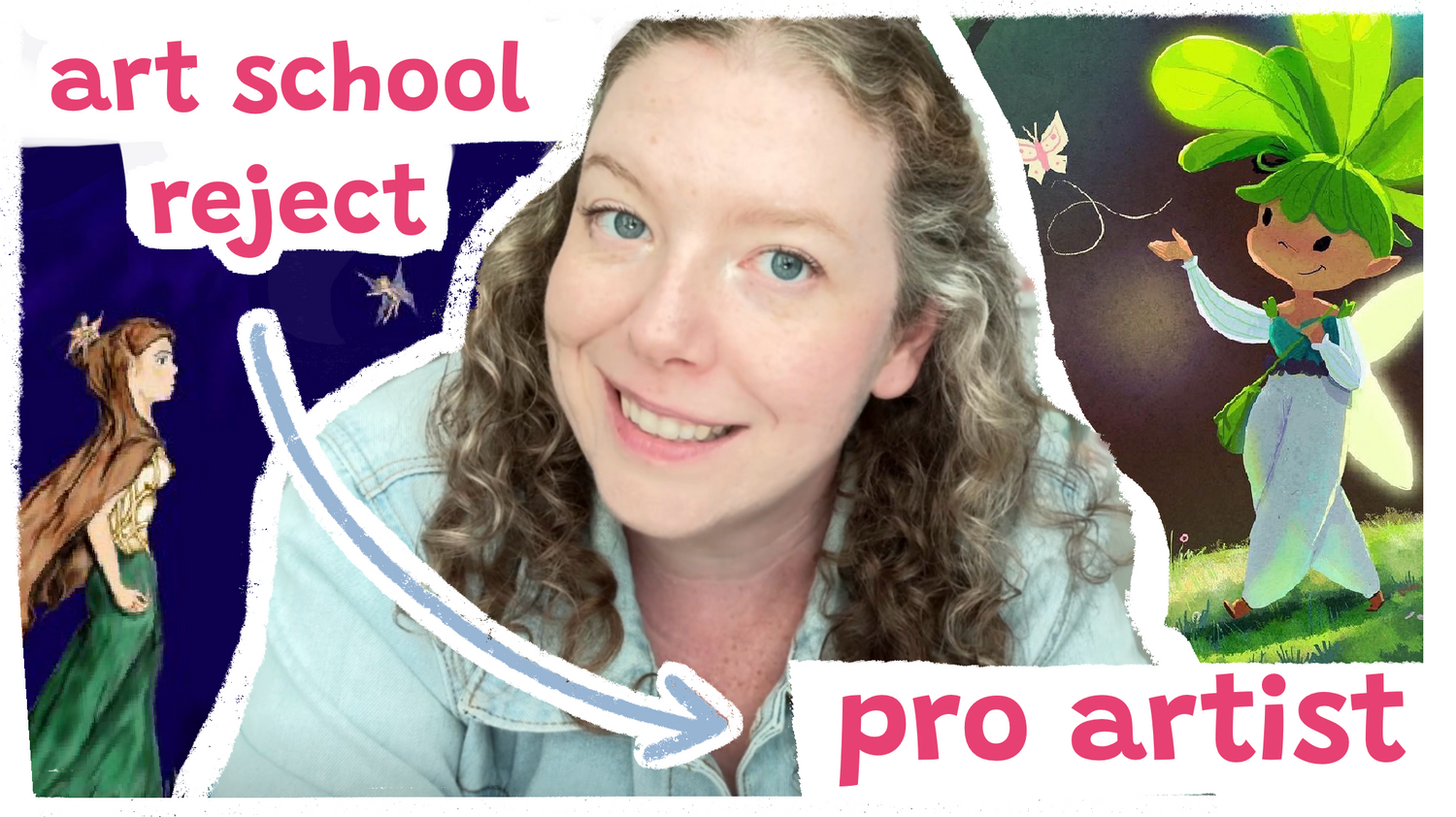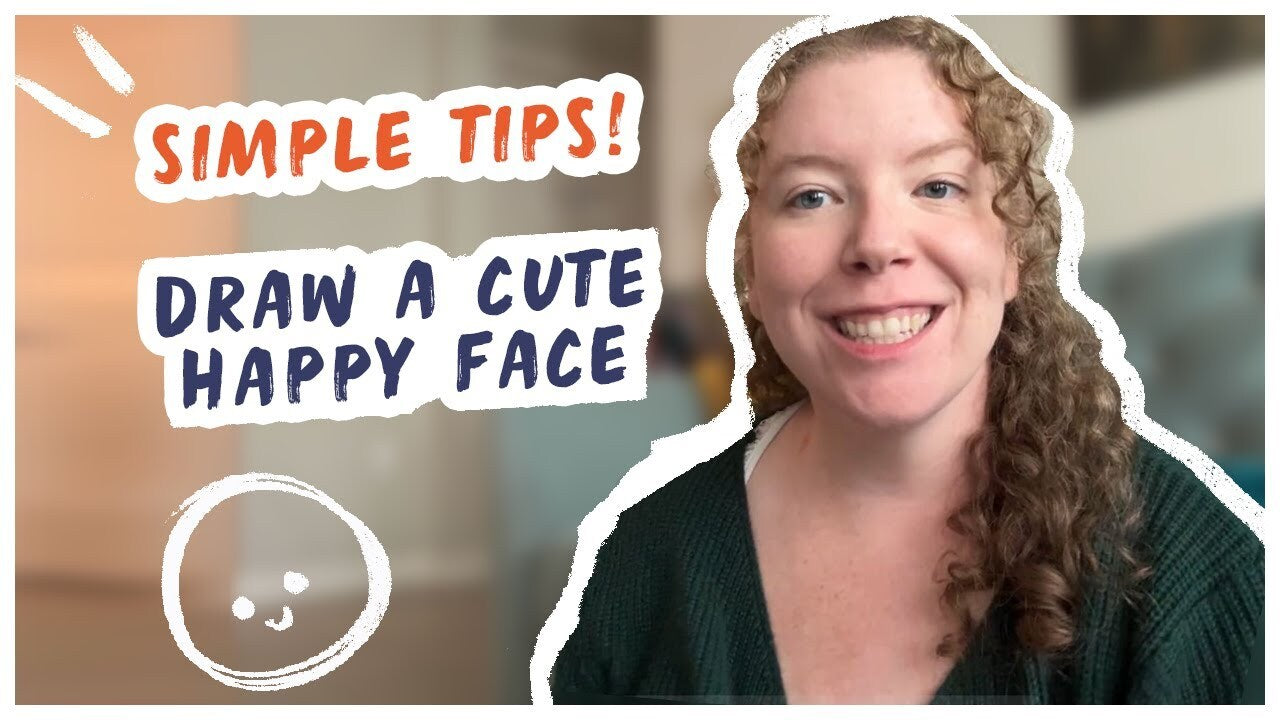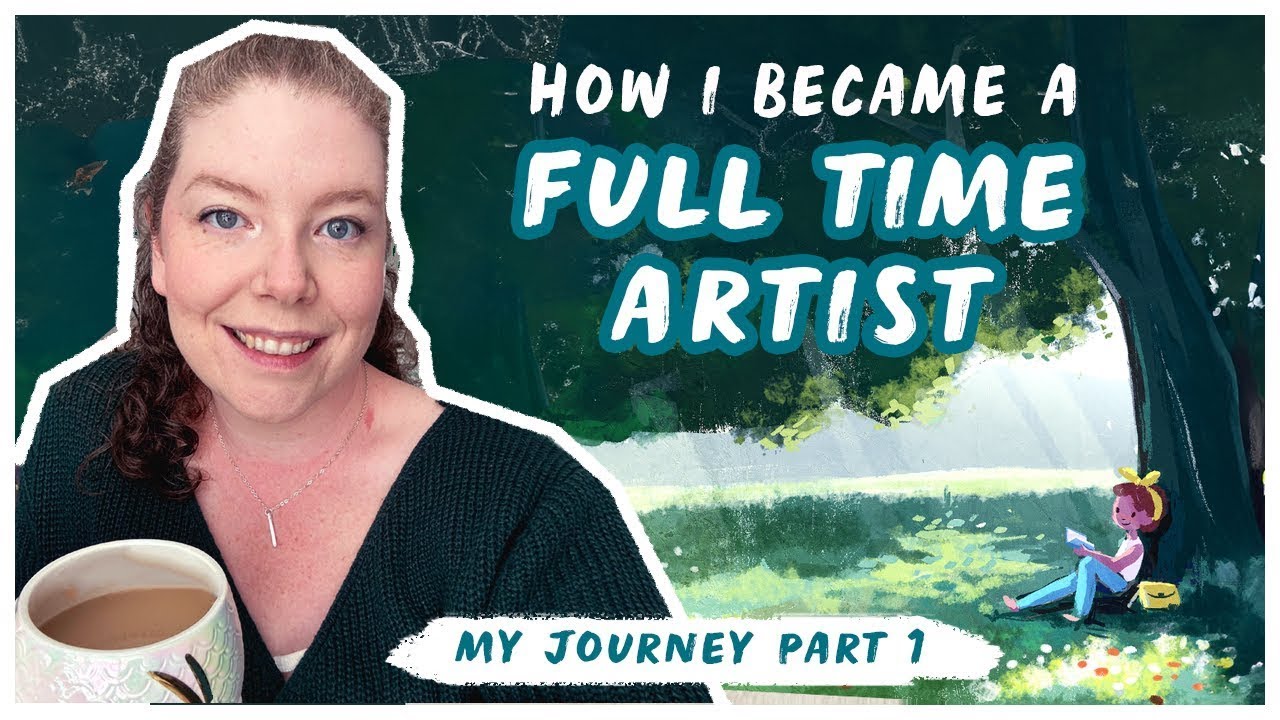Growing up, I constantly heard the myth of the “starving artist.” You know the one:
“There’s no money in art.”
“It’s just a hobby, not a real job.”
“Only people with connections make it.”
It crushed me sometimes. I knew I wanted kids, a family, and the security of a full-time job; not a life spent gambling on gallery showings. And let’s be honest: my style was cute and cartoonish, not exactly what people think of when they picture a “real” artist.
But thankfully, I’m stubborn, and I didn’t let that stop me.
Now? I work full-time, and I support my family of four with my income.
I’ve had so many of you ask about my story—how I got here, how I made it, like officially as an illustrator. So I’m going to break it down. I’m going to tell my little story time.
This is going to be a long-format, rambling story, so grab something delicious to drink, and let's chat!
Lion King Coloring Books
There wasn't a time I didn't love art. I was doodling in the dirt from just about the time I could move my fingers.
But, as for times I was concious enough to remember, I know I loved coloring. I was the total “hundreds of coloring books” kind of kid. I’d fill them up, and then go begging for another. My walls were plastered in those velvet color-me posters they sell in every airport to keep kids distracted on the plane.
When I was about 9 years old, I think my mom must’ve been talking to me about what I wanted to do when I was older.
I was coloring in my Lion King coloring book while watching The Lion King on VHS—just to give you an idea of how old I am—when a scene caught my attention. Simba falls, the sky shifts, and the background lights up with color. You know the one.
It was stunning. I was so captivated I didn't even verbally answer her. I just remember thinking, I want to be able to do that.
So I ruffled through my big box of off-brand Crayola and got to work
...and pretty quickly got bored.
And frustrated. Because why would I be bored? I knew i loved to color, so shouldn't this be fun?
That was what led to realizing, oh! I don't just like coloring. I like coloring characters.
So I went to my mom and asked her if that was a job. She was like, “I don’t know, but I know how you can find out?”
That night she got the address for Disney and had me write them a letter.
So I wrote them a letter (true fact: I misspelled my own name) and told them "Hi! I'm 9 years old, interested in working for Disney, and wanted to know if there was a job where you could color in the characters."
To our surprise, I got a wonderful response back. It was like a quarter-inch-thick packet. The first page was personalized, and the rest looked like standard material for inquiries: how to build your portfolio, what schools to go to, what kinds of jobs there are, etc.
The first page was to me specifically—with my misspelled name (I think it said “Carly Feston” instead of Fenton)—and it basically said: coloring in the characters isn’t really a job. However, if you want to do that, you could become an animator, because back then animators usually colored their own work.
This was back in the 90s or early 2000s when 2D animation was still happening. The letter recommended I learn to draw from life, get a sketchbook, draw people and characters, and possibly go to art college.
So I just… followed their advice.
High School and Art Fundamentals
Luckily, I had really supportive parents. They even let me buy figure drawing books. Yup, the kind with nude models. (I’d cover them up while I drew.)
Eventually, we found a charter high school that specialized in fine and performing arts, and I enrolled.
There, I got to try everything: oil painting, chalk pastels, acrylics, still lifes, etching—you name it. And I realized something: I loved painting.
It made sense. Painting is all about color, and I’d always been drawn to that. Honestly, I didn’t enjoy drawing much back then. It just felt like the prerequisite step before getting to the fun part: coloring.
But my teachers (who, in hindsight, were absolutely right—but teenage me was sure they were trying to ruin my life) kept insisting, “To be a good painter, you have to learn to draw.”
So, I caved. Figured, fine, I guess I’ll figure it out.
I hit the sketchbook hard; practicing for hours every single day. At the time, I didn’t feel like I was improving much. But slowly, I was gaining the critical technical skills I needed.
Even more importantly, I was building the grit and proof of passion that would carry me through the harder years to come.
The College Decision
When it came to college, I wasn’t sure if I wanted to go. My parents were supportive either way, but I could tell my mom was worried. My dad sat me down and said, “Okay, if you don’t go to college, what are you going to do?” He never went to college, so he couldn’t exactly tell me not to.
I thought maybe I’d become an entrepreneur like them—they owned their own business—but after thinking it over, I realized: I do better in structured environments. I needed school. That might not be true for everybody, but it was true for me.
So I decided to go to college. But a lot of the art schools I looked at… I didn’t like the work from their graduating students.
Big tip: if you’re going to art school, look at the portfolios of the students who’ve graduated. If you don’t like their work, don’t go to that school; they’re teaching that style.
After a lot of research—and firmly deciding I didn’t want to do fine arts or animation (which ruled out most schools)—I narrowed it down to two options: Savannah College of Art and Design, and San Jose State University.
I chose San Jose State because it was so much cheaper (like, way cheaper). Plus, they offered an Animation/Illustration major, which not every school had. I looked at the graduating students’ portfolios and thought, Yes. This is the kind of art I want to make.
The program structure was pretty straightforward: you take your general ed classes, then beginner art courses, and finally apply to get into the actual major.
I applied… and didn’t get in.
It was devastating. I’d always been a straight-A student! But suddenly, after a lifetime of work, I wasn’t good enough?
I cried. A lot. Like, a lot. But still, I pushed through and refused to give up.
I went to one of the teachers and asked for feedback. They told me my figure drawing needed work.
So I signed up for figure drawing classes and practiced every single day for two months straight.
They say it takes 10,000 hours to master something. I think I knocked out a solid quarter of that just during this time.
Which meant, I applied again...I got in!
Finding My Voice (and Learning Not to Care So Much)
College was long. The program is 4.5–5 years, but I was there for 7.
In the early years, I didn’t really have an opinion about anything. I was constantly looking to my teachers for approval, asking things like, “Is this good?” or “Did I do it right?” I was so focused on getting things right that I had no idea what I actually liked. My entire artistic identity depended on whether someone else said it was okay.
Then came that teacher.
He was mean. Not the tough-love kind—just straight-up rude and discouraging. And something about his attitude flipped a switch in me. I stopped caring what he thought. I figured, “I’m going to get my B and move on with my life.” And weirdly, that mindset set me free.
For the first time since I was a little kid doodling in my Lion King coloring book, I wasn’t creating for anyone else. I was drawing what I liked. I stopped chasing approval and started listening to my own instincts.
I wouldn’t call it confidence exactly, but I was starting to develop a point of view. A style. A creative compass that pointed inward instead of outward.
Around that time, we were told in class, “All your portfolio pieces should be horizontal. That’s what studios want.” So naturally, I submitted a vertical piece.
Why? Because I wanted to.
And yeah, during the review they questioned it: “Why is this vertical?” But I didn’t flinch. I just didn’t care anymore. I wasn’t trying to follow a formula; I was trying to find what felt true to me.
That same shift also made me think more critically about my future. I realized I didn’t want to work on one project for years and years. The idea of getting locked into a single, narrow artistic lane terrified me. I didn’t want to get pigeonholed.
I knew I’d thrive better in a smaller studio setting, where I could bounce between characters, animation, illustration. Where I could wear different hats and keep growing creatively.
And honestly? That gut instinct ended up being spot on.
Getting My Feet Wet at Gaia Online
My first real job in the industry was creating avatars and outfits for Gaia Online. It was a fun, colorful, creative playground—and honestly, a fantastic way to get my feet wet as a working artist. I got to design cute characters, experiment with visual storytelling, and contribute to a team that really valued artistic input. It wasn’t glamorous, but it was real, professional experience—and I loved it.
That said, my final six months of school were rough. I was completely burnt out. The culture among students was all about sacrificing sleep and sanity for art. You’d constantly hear, “I stayed up all night working on this,” like it was a badge of honor. The only way to keep up seemed to be total exhaustion. I was running on fumes.
But I pushed through, finished my portfolio, and finally graduated. I started applying for jobs. I got one offer. And then… something wild happened.
The Disney Dream (and the Weirdest Art Test)
Disney called.
That was the dream. THE dream. The one I’d had since I was coloring in my Lion King book on VHS rewind-repeat.
I was honest with them—I had another offer on the table, but if there was a chance to work with them, I’d love to move things along. To my surprise, they agreed.
They sent over an art test. The prompt?
Create a monster, in a city, at night, with one human character.
Most people would probably take that and try to mirror Disney’s house style, play it safe, and do the expected.
But I didn’t.
I drew a goofy, blobby monster on a date with a pretty girl. They were walking down the sidewalk together—he looked stunned she’d even agreed to go out with him. It was sweet, weird, and 100% me.
They rejected it almost immediately.
Still, I followed up. I reminded them I had Flash animation experience, and while illustration was my focus, I’d trained in animation too. I sent more of my work and talked about how much The Lion King meant to me growing up. (Yes, the VHS came up again.)
And a few days later… I got the offer.
Best Job Ever
Working at Disney Interactive was genuinely one of the best times of my life.
Every day, I woke up excited to go to work. The kind of excited where you look forward to Mondays. I was surrounded by other creatives who were just as passionate and nerdy and weirdly specific about art as I was. We’d bounce ideas around, joke through tough deadlines, and cheer each other on. It was collaborative, fast-paced, and full of that magical blend of structure and freedom that makes you feel like your work matters.
I got to do a little bit of everything: character design, animation, environments, UI elements. It was the perfect balance of fun and challenge, and I felt like I was constantly learning and growing.
And yeah, it was Disney. Every time I swiped my badge at the door, there was this part of me—the nine-year-old with the Lion King coloring book—that lit up all over again. It felt surreal and incredibly validating, like all the hard work and sketchbook hours and rejection letters had finally paid off.
Eventually, the studio closed down, as many game studios do. It was heartbreaking, of course. But it didn’t take away from how amazing the experience had been. That chapter shaped so much of who I am as an artist and gave me the confidence to believe I really could make a living doing what I love.
Even now, it remains one of my favorite memories; one I’ll carry with me for the rest of my career.
I’ll save the next chapter—how I transitioned from studio work to full-time freelance, for Part 2.
But looking back on this part of the journey, here’s what stands out:
I didn’t have it all figured out. I changed my mind more than once. I got rejected. I cried. I doubted myself constantly. But I kept going. I kept drawing. I kept showing up.
And that made all the difference.
It wasn’t about being the most talented in the room.
It was about being stubborn enough to stay in the room. If you’re on this path too—feeling like you’re not good enough yet, wondering if it’s worth it—I hope this reminds you that it absolutely is!
Just keep going!
P.S. If you’re serious about becoming a full-time artist, the most important thing you can do is find your style. It’s what sets you apart, helps your work stand out, and keeps you excited to create—even when things get tough.
That’s exactly why I created a course focused entirely on helping artists discover and develop their unique style—something I wish I had when I was just starting out.
If you’re ready to stop second-guessing your work and start building a style that feels authentically you.





